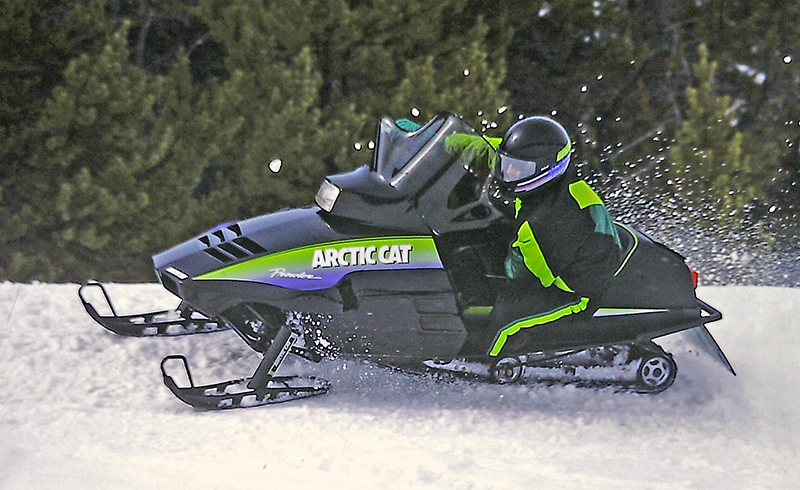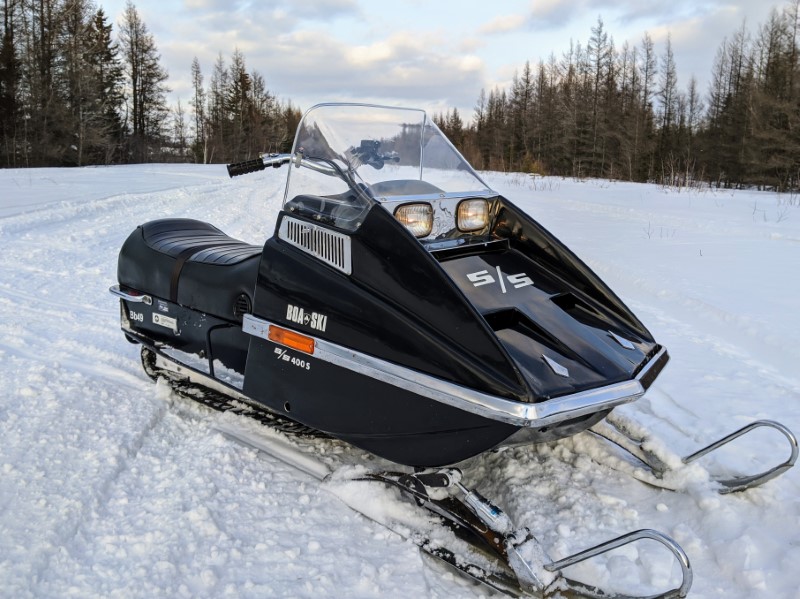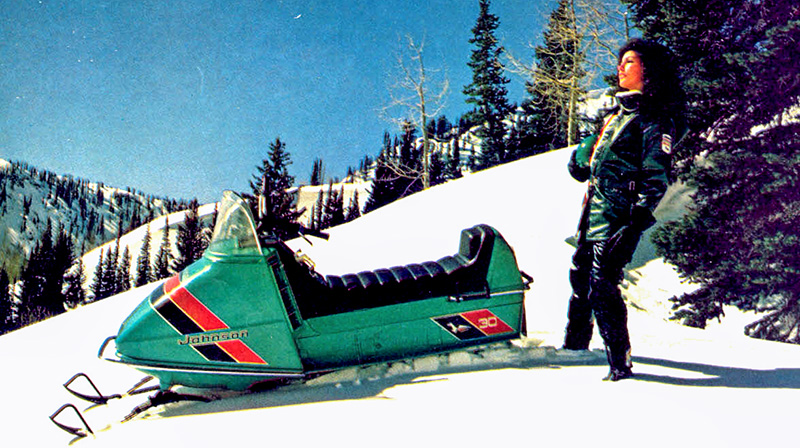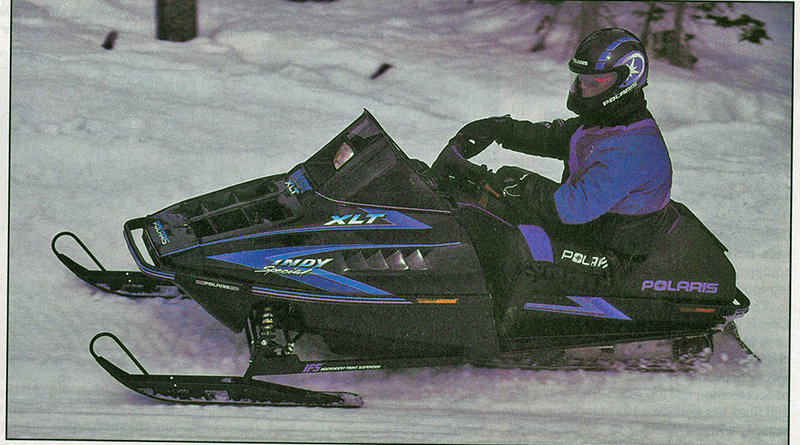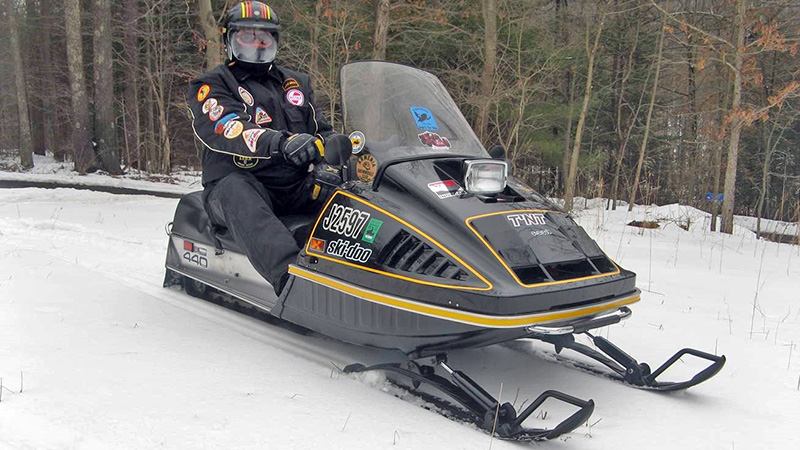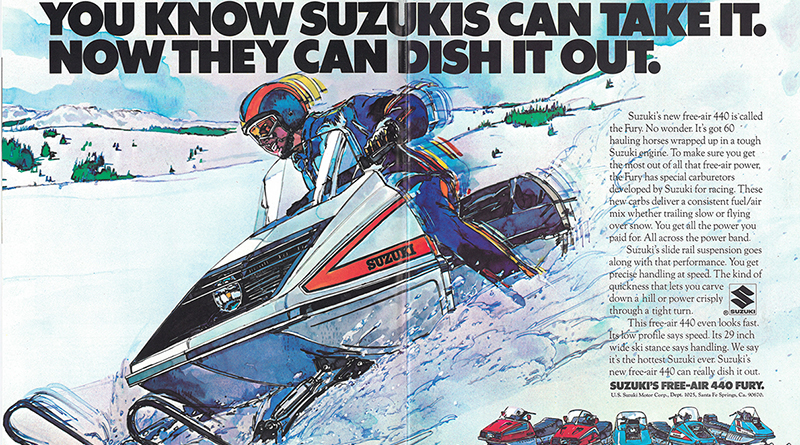In 1973, the rapidly expanding snowmobile industry started to experience severe problems. Massive, industry-wide overproduction of sleds, the relatively light winter of 1972-73 and the national energy crisis spawned by the oil embargo combined to turn the snow machine business from a cash cow into an ocean of red ink almost overnight. Companies started bailing out right and left.

Fuqua Industries, the company that purchased industry pioneers Scorpion (originally Trail-A-Sled) in 1969, sold the Iron Range sled builder to a management group headed by Harvey V. Paulson at the end of calendar year 1973.
Paulson, who had joined the business just a few months earlier, knew the company needed to improve its products and product quality to have any chance to survive. The cornerstone of that effort was the new Whip, a breakthrough model for the company that was introduced in 1974 for the 1975 model year.
Breaking With Tradition
Positioned as a comfortable and powerful family sled, the Whip was about as big of a break with traditional Scorpion product as possible. The almost all-new model featured an aluminum chassis with a forward-mounted engine, a float-type carburetor, wider track, expanded ski stance, sleek new styling and a new blue hood instead of the familiar Scorpion red and black. It was well-equipped with ski shocks, instrumentation mounted in a wood-grained dash panel and a primer. But the Whip retained older technology that bordered on obsolescence including breaker point ignition on the JLO engines, a drum brake and buckhorn handlebars.

Scorpion’s patented Para-Rail suspension, introduced on 1973 models, was standard equipment. This unique undercarriage, said to combine the best features of bogie wheels and slide rails into one unit, had multiple wheels mounted on a pair of solid rails that moved together. It did provide the low-snow or no snow capability of bogie wheels with a considerably improved ride, but it never came close to providing the ride quality of any of the better slide rail systems. Despite that, the overall ergonomics of the Whip were very good – It was a comfortable and enjoyable sled.
The company claimed that the Whip was the lightest sport sled in the industry, and spring prototype tests for the Popular Science Snowmobile Handbook did reveal the lightest wet weight of anything the magazine evaluated with a 340 or larger engine. It was also one of the quietest machines tested that spring.
Snow Goer predecessors liked the Whip very much, saying, “Test riders ranked it at or near the top in the important categories of comfort, handling and gas economy.” They went on to say, “The Whip is the culmination of the best of Scorpion engineering and a breakthrough that has put the company into the ‘bests in all categories’ league.”
Impressive Accomplishments
Over the next few seasons, the Whip was upgraded with a slightly wider front end, optional slide rail suspensions and cosmetic changes that included a new but similarly styled hood and belly pan. Model extensions like the Range Whip, the Whip TK/TKX and the Sting were added to the line, and the Whip would compile a list of significant accomplishments along the way.
In 1975, Roger Ebert rode a stock 340 Whip to become one of only 22 racers from a field of 377 starters to complete the prestigious Winnipeg-to-St. Paul I-500 cross country race.
In 1977, a group of snowmobilers from four clubs in the Grand Rapids, Michigan, area established a new 24-hour world endurance record, shattering a six-year-old mark by recording 1,172 miles on one stock Whip and 1,108 on another one – and both averaged better than 15 mpg while doing it.
 During the winter of 1977-78, Fritz Sprandel rode his stock Whip more than 5,000 miles from Westport, Washington, to Eastport, Maine.
During the winter of 1977-78, Fritz Sprandel rode his stock Whip more than 5,000 miles from Westport, Washington, to Eastport, Maine.
But despite the sales and impressive accomplishments of the Whip, profitable operation continued to elude Scorpion Inc. The company had purchased Brutanza Engirreering and sold its Brut snowmobile as a Scorpion model for a couple of seasons. It also purchased the JLO two-cycle engine factory from Rockwell International and moved it from Germany to Minnesota, re-christening the power plants as Cuyuna engines for their exclusive-to-Scorpion service.
A deal to produce badge-engineered snowmobiles for Massey-Ferguson helped some, but Massey departed the sled business after the 1977 season. More money was sunk into development of a line of Scorpion mopeds with new Cuyuna engines for 1978, but it just wasn’t working out on the accounting ledgers. And so, Scorpion Inc. was sold to Arctic Enterprises in March 1978.
End Of The Line
Continuing as the mainstay of the Scorpion line under Arctic Enterprises ownership, further changes to the Whip were mostly limited to cosmetics. Although the Whip was, at the time, a very good value for the money, sales of all Scorpion models continued to slow.
The last Whips were manufactured in 1979 for the 1980 model year. Enough were left over that they remained on the market unchanged for the 1981 model year. And in spring 1981, the financially over-extended Arctic Enterprises was forced into bankruptcy, due in part to purchasing Scorpion.
The Whip family of sleds turned out to be the last and undoubtedly the best sleds engineered by this industry pioneer – The awesome 1981 Scorpion Sidewinder was considered an Arctic Cat El Tigre in drag. A solid, competitive product despite a few outdated features, the Whip was a giant step forward for Scorpion. But good as it was, it just wasn’t enough to make the company profitable. It’s questionable if Scorpion, or any of the other smaller snowmobile brands of the day was actually salvageable. Still, Paulson and his people made a great try with the Whip at the heart of the attempt.
And to this day, the Whip remains a personal favorite sled of the entire Vintage era. I still love those buckhorn handlebars.
Editor’s Note: This Flashback article from International Snowmobile Hall of Fame writer David Wells first appeared in Snow Goer magazine. To see more of Wells’ great articles on interesting old sleds, plus in-depth new sled evaluations, aftermarket product tests, informative how-to story, interesting travel features, Snowmobile Science articles and much more, subscribe to Snow Goer magazine. The original publication can also be purchased at the Snow Goer Shop.

